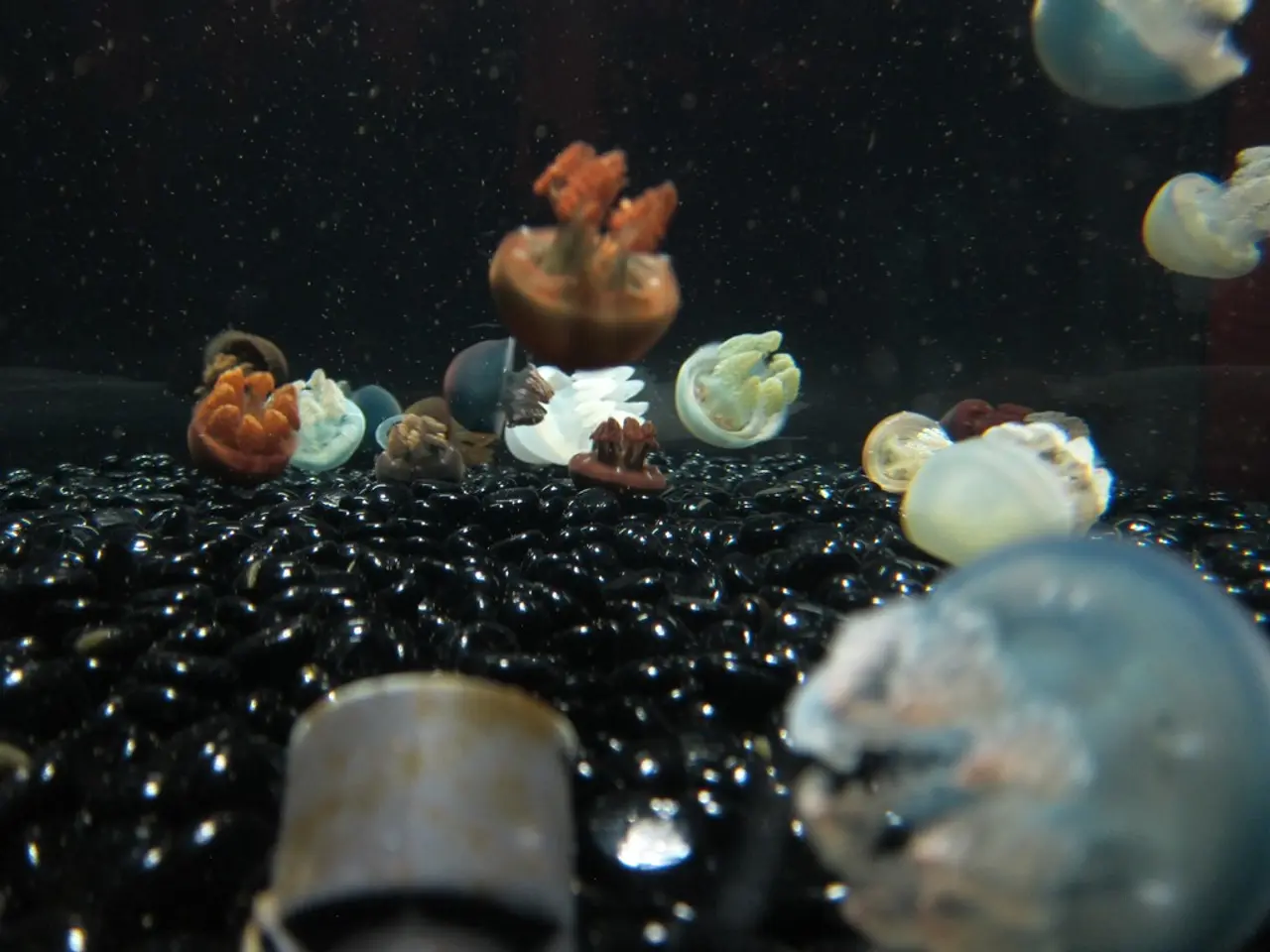Potential Risk of Vibrio Species in the Northern and Baltic Seas
### Rising Risks of Vibriosis in the North and Baltic Seas
The warmer months bring a heightened risk of vibriosis infections, particularly in the North and Baltic Seas. This health concern stems from the proliferation of dangerous *Vibrio* bacteria in the region's coastal waters as temperatures rise.
#### Key Risk Factors
The increased presence of pathogenic *Vibrio* bacteria in the waters is primarily due to climate change, leading to warmer sea temperatures. This environmental shift extends the seasonal presence of these bacteria, elevating the risk for those who swim, consume seafood, or work in marine environments.
Elderly individuals are also at a greater risk, as their age can lead to gut barrier damage, immune dysfunction, and systemic inflammation when exposed to heat. Additionally, those with compromised immune systems, liver disease, or iron overload disorders like haemochromatosis face a substantially higher risk for severe *Vibrio vulnificus* infections.
Exposure pathways include the consumption of raw or undercooked shellfish, especially oysters, as well as exposing open wounds to seawater. Prolonged heatwaves, increasingly common due to climate change, can exacerbate gut microbiome disruption and immune impairment, particularly in the elderly, further raising infection risk.
#### Treatment Options
Early recognition is crucial in addressing vibriosis infections, as they can progress rapidly, especially in high-risk individuals. Appropriate antibiotics, such as doxycycline or ciprofloxacin, are typically recommended for moderate to severe cases. The specific regimen depends on the *Vibrio* species and patient comorbidities.
For wound infections, thorough debridement and antibiotics are essential to prevent systemic spread. Aggressive fluid resuscitation and electrolyte management are critical, as infections can lead to severe dehydration and sepsis. Emerging research suggests that restoring gut microbiome balance, for example, with probiotics like *Roseburia intestinalis*, may help improve gut barrier function and immune response, particularly in the elderly during heat stress.
#### Special Considerations for High-Risk Groups
Patients with haemochromatosis or other iron overload conditions require heightened vigilance and prompt treatment, as *Vibrio vulnificus* thrives in iron-rich environments. Elderly individuals should avoid high-risk exposures during warm months and seek medical attention promptly if symptoms develop.
#### Prevention Strategies
To minimise the risk of vibriosis infections, it is advisable to avoid the consumption of raw or undercooked seafood, especially oysters, during summer months. Open wounds should be protected from exposure to seawater. Local health advisories should be monitored for *Vibrio* outbreaks during heatwaves. High-risk individuals, such as the elderly, immunocompromised, those with chronic liver disease or iron overload, should exercise extra caution and consult healthcare providers for personalised advice.
#### Summary Table: Risk Factors and Treatments
| Risk Factor | Clinical Implications | Treatment Options | |----------------------------|-------------------------------------------------------|----------------------------------------------------| | Warm seawater exposure | Higher bacterial load, increased infection risk | Avoidance, wound care, antibiotics if infected | | Elderly age | Gut/immune dysfunction, worse outcomes | Probiotics, prompt antibiotics, supportive care | | Chronic diseases | Severe, systemic infection risk | Early diagnosis, tailored antibiotics, wound care | | Iron overload | *V. vulnificus* proliferation, fulminant infection | Chelation therapy?, rapid antibiotics | | Raw shellfish consumption | Gastrointestinal or wound infection | Avoidance, antibiotics if symptomatic |
In conclusion, the risk of vibriosis in the North and Baltic Seas peaks in summer due to warmer waters and increased human activity. Elderly individuals, those with chronic diseases or iron overload, and people consuming raw seafood are at highest risk. Treatment relies on rapid diagnosis, appropriate antibiotics, wound care, and supportive measures. Emerging evidence suggests supporting gut health may mitigate risk, especially in vulnerable populations during heatwaves. Prevention through exposure avoidance and public health advisories remains paramount.
The Robert Koch Institute (RKI) has issued a warning about the increased risk of vibriosis infections during summer. Vibriosis can cause serious and potentially life-threatening infections, particularly in individuals with weakened immune systems. Those at greatest risk of vibriosis are people with open wounds or weakened immune systems. The RKI advises against eating raw or undercooked shellfish in the North and Baltic Seas during summer and recommends cooking shellfish until the juices run clear to ensure the destruction of vibrios. The RKI also recommends individuals with open wounds or weakened immune systems to avoid contact with seawater in the North and Baltic Seas during summer. Vibriosis can be transmitted to humans through the handling of contaminated seafood, and thoroughly washing hands and surfaces after handling raw shellfish can help reduce the risk of vibriosis transmission. Treatment for vibriosis involves antibiotics, and the risk of vibriosis infections increases with the consumption of raw oysters. Cooking shellfish to an internal temperature of 145 degrees Fahrenheit (63 degrees Celsius) can kill vibrios. The Baltic Sea is particularly affected by vibriosis due to its low salinity.
Elderly individuals may face worse outcomes due to their age contributing to gut barrier damage, immune dysfunction, and systemic inflammation when exposed to the health risks associated with increased temperatures in environmental-science settings, such as the North and Baltic Seas. Improving mental-health among high-risk groups, like the elderly, during summer months could potentially enhance their ability to take necessary precautions to avoid vibriosis infections in the science of health-and-wellness. For instance, implementing stress-management techniques or providing educational resources to ensure individuals are aware of the risks and prevention methods can support their decision-making process and protect their health.




